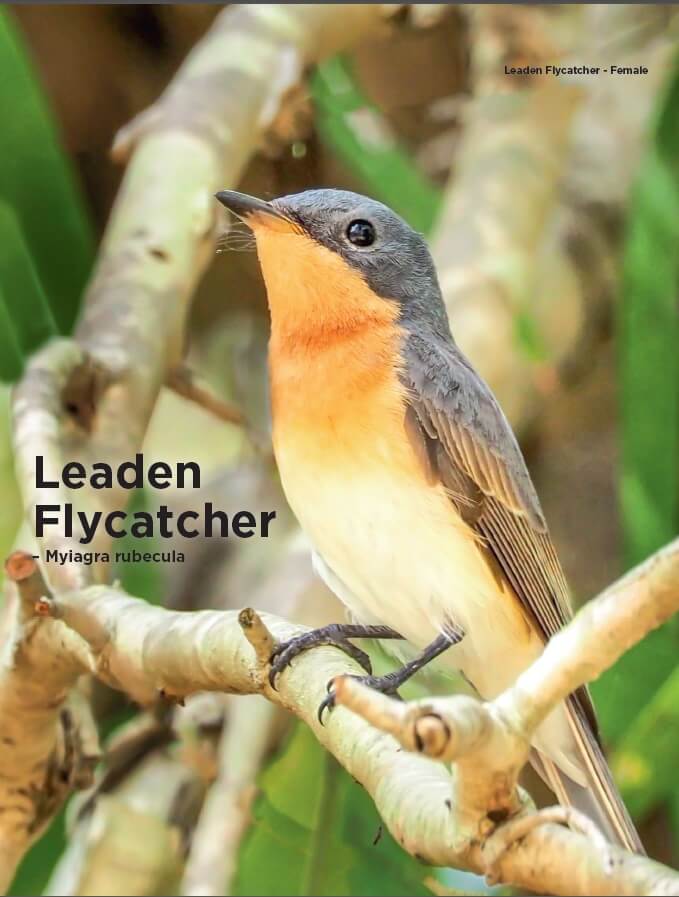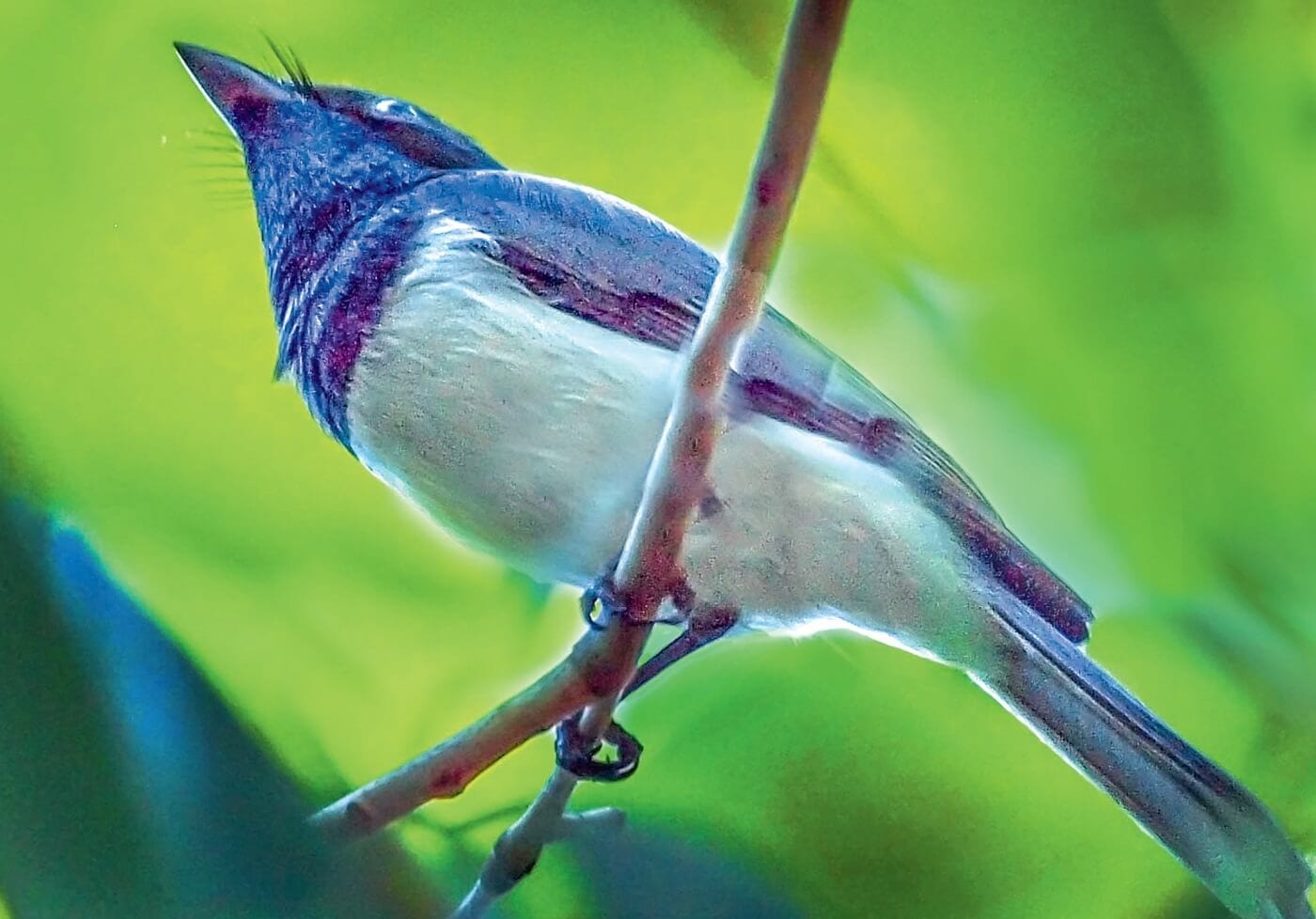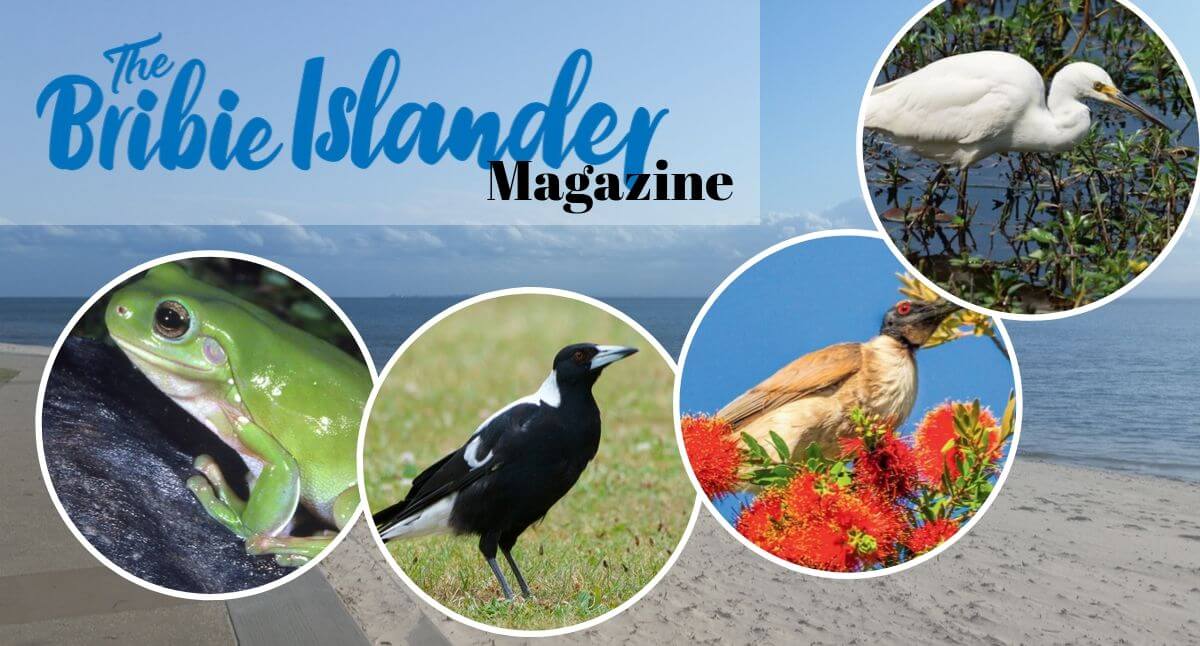Leaden Flycatchers are reasonably common on Bribie and surrounds and most likely to be encountered in woodlands in mid to upper canopies during the summer months. They are small active, passerine birds at 14-17cm in length a little smaller than Willy Wagtails. Their weight is just 11-14g which is just a little larger than two teaspoons of sugar.
Males have dark blue-grey breasts and heads with small crests. Underparts are white. Females are quite different being grey-brown above and rufous orange on the throat and breast. Their tails are long and when perched are continually quivering. Their calls are frequent whistling sounds and can be confused with Satin Flycatchers which are not common in our area.
 Juveniles are similar to females but are paler in colour. Most often they forage alone but sometimes operate in pairs. Usually, they are seen in open forests, at the edge of rainforests and often venture inland following the river courses. In Australia, they are found across the north, down the east coast to South Australia and into Tasmania.
Juveniles are similar to females but are paler in colour. Most often they forage alone but sometimes operate in pairs. Usually, they are seen in open forests, at the edge of rainforests and often venture inland following the river courses. In Australia, they are found across the north, down the east coast to South Australia and into Tasmania.
They are migratory in the south, but their actual movements are not well known. They are also found in PNG and Indonesia. Small insects and flies picked from foliage and taken in the air are their main food source (hence the name Flycatcher). Around their bills are small bristles that act as censors and help in the capture of their prey. Breeding takes place usually between August and February.
Nests are normally built on horizontal branches in exposed areas in large trees in the forest. Often there is an overhanging branch just above to give protection. Nests are cup-like and are made of bark or lichen and woven together with cobwebs. They are cleverly built to resemble the host branch, so the nests are extremely hard to find as they resemble knobs on the wood. Clutches of 2-3 white eggs with motley strips are laid.

Both parents share the nest duties and rearing of the young. The mortality rate is very high with only a 23% success rate. Only one brood is produced each year. Flycatchers are very hard to identify as some species are quite similar. The Satin and Broad-billed Flycatchers are very much like the Leaden.
Satin Flycatchers are very rare visitors to our area while Broad-billed is confined to the far north so that it is highly unlikely but not impossible that you would see these species on Bribie Island. Leaden Flycatchers were first described by John Latham in 1801. John Latham was an English physician and ornithologist who was known as the Grandfather of Australian Ornithology.
Specimens were sent to him from Australia which he examined and documented. Threats to the Leaden Flycatcher are loss of habitat, bushfires and the usual dangers to wild birds such as reptiles and feral cats. Their conservation status is secure for now.
Other Articles
- Bribie Island Wildlife – BRONZE – CUCKOOS
- Bribie Island Wildlife – NOISY FRIARBIRD – PHILEMON CORNICULATUS
